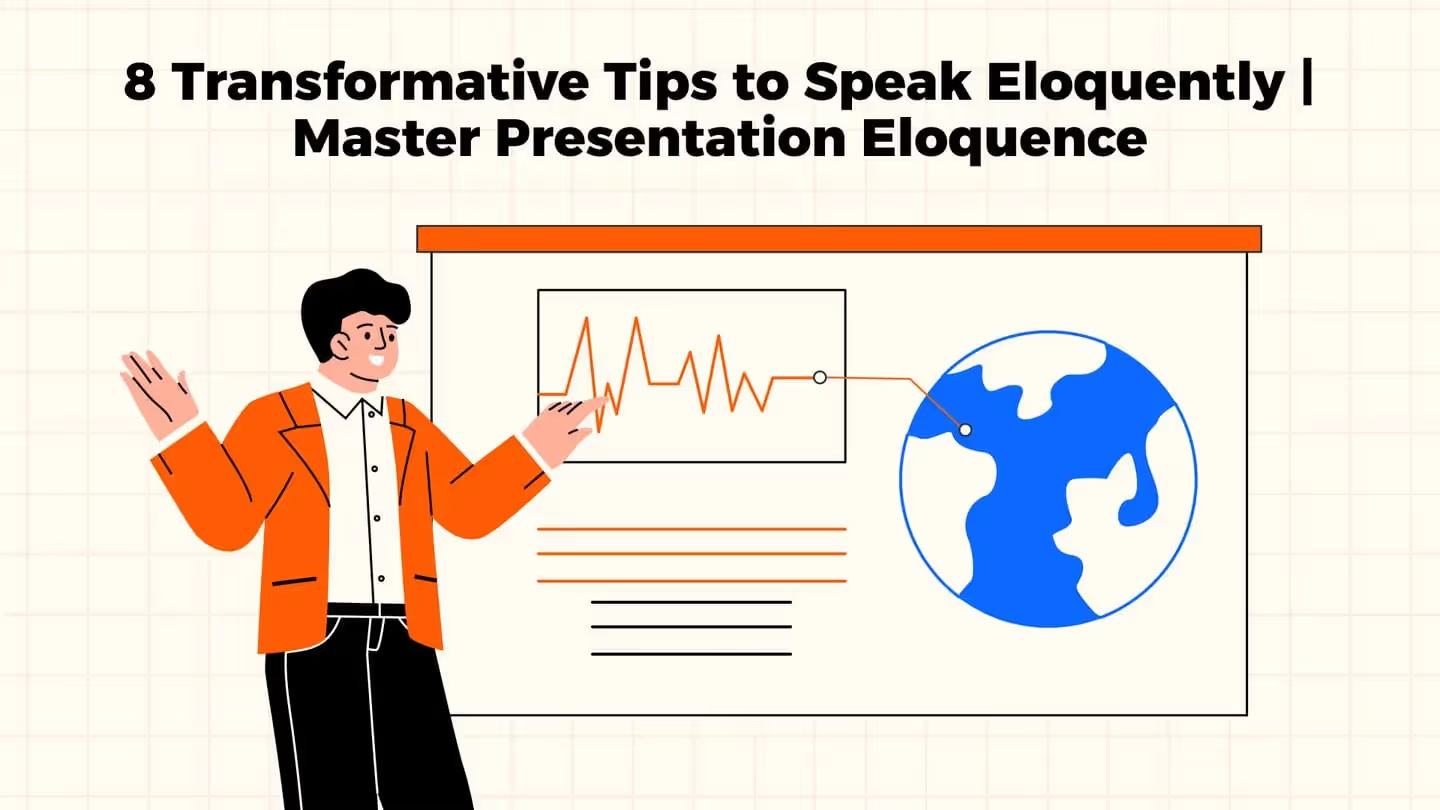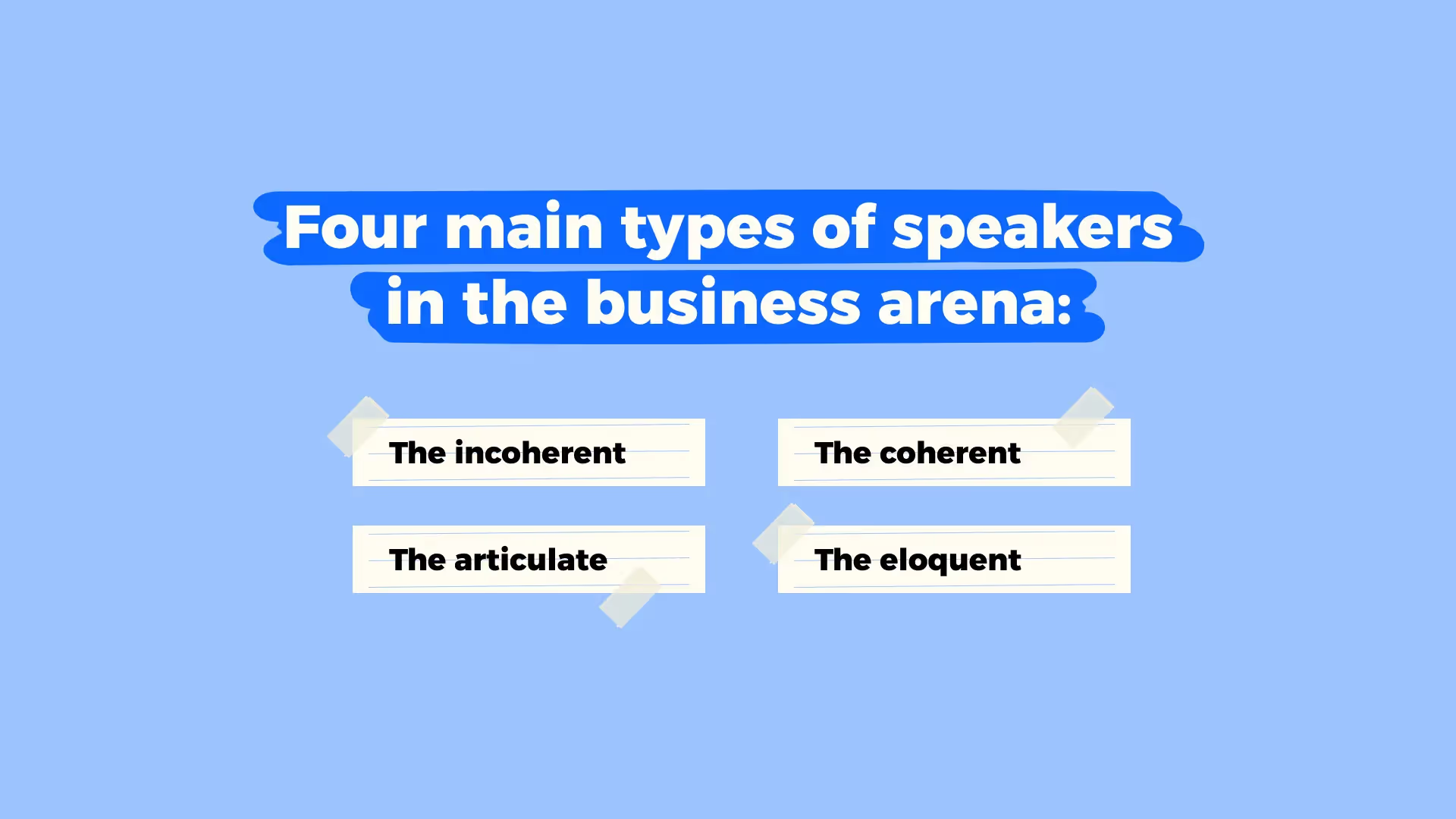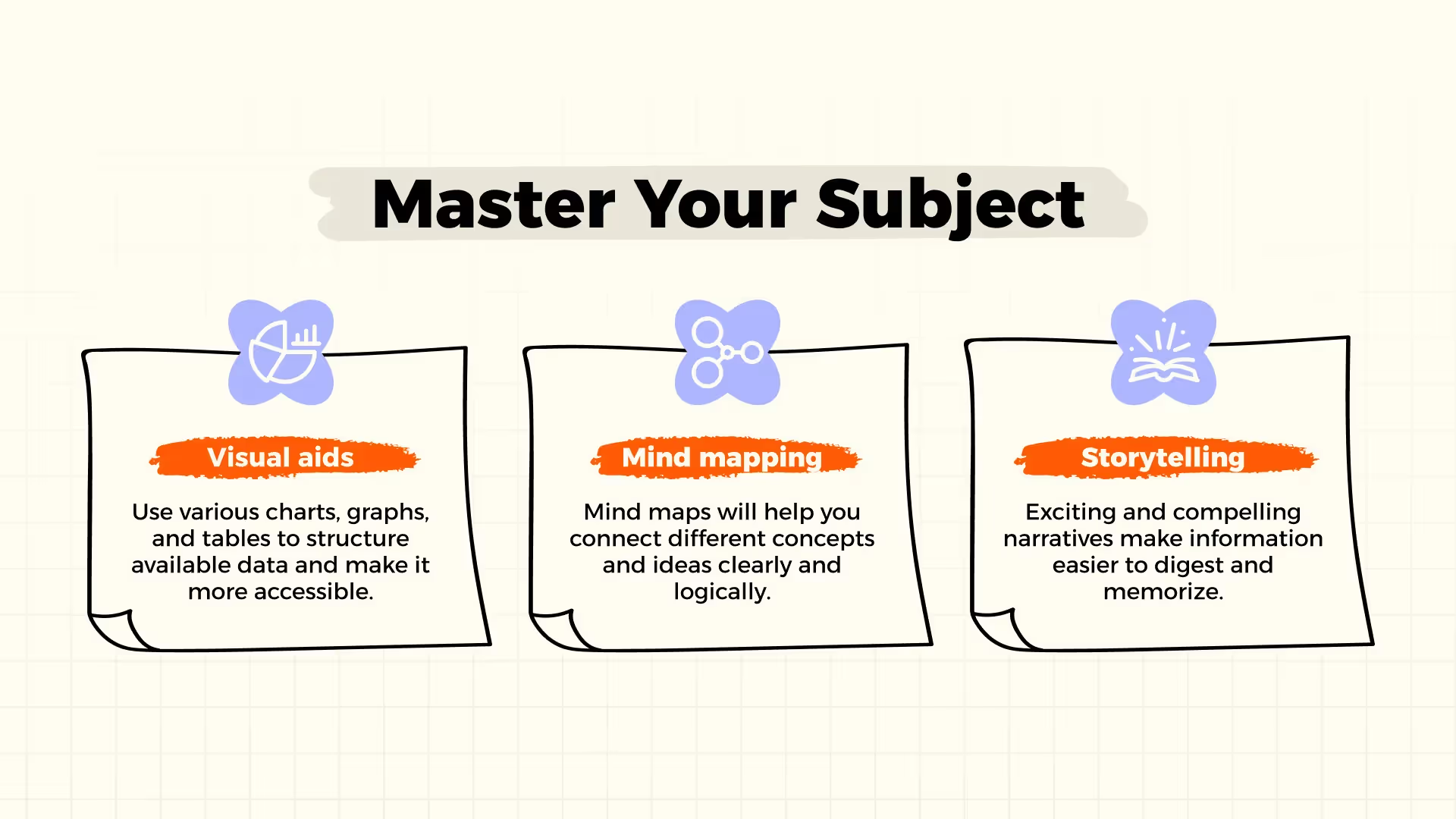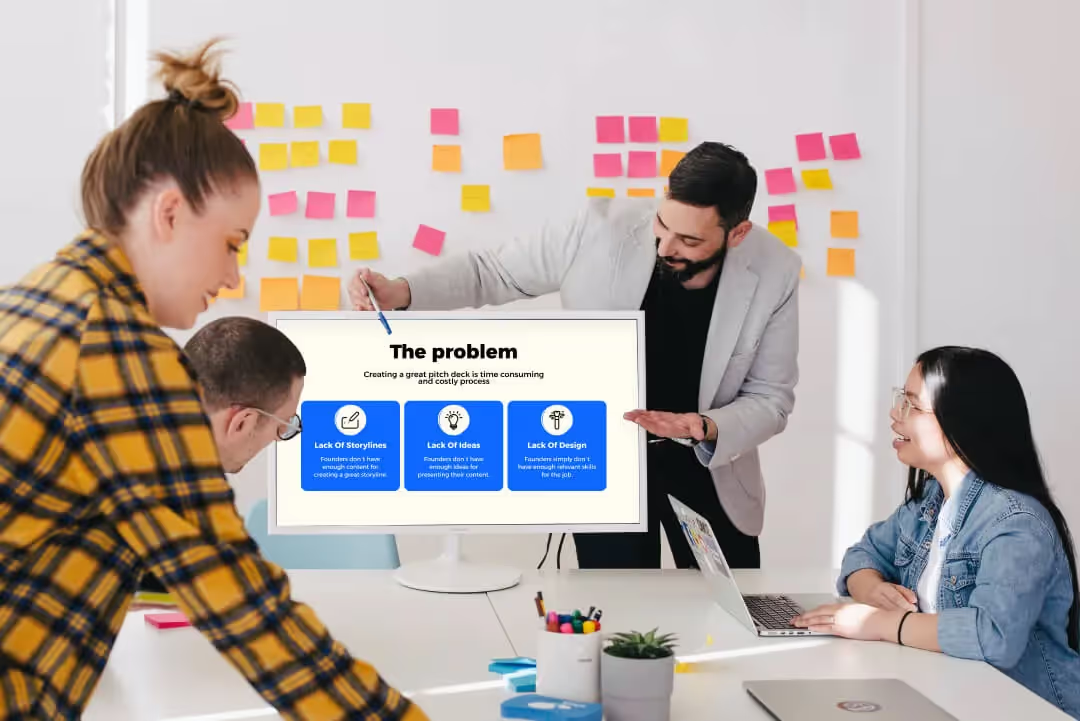
8 Transformative Tips to Speak Eloquently | Master Presentation Eloquence

What is the most underrated superpower of all? We say – eloquence. You may feel surprised and intrigued at the same time since when you think about eloquent speeches, you imagine weddings, anniversaries, and other festivities that involve elegant and artful communication. Yet, an eloquent speaker will thrive in the field of successful presentations as well.
Eloquence, when used correctly, will serve as a powerful tool of persuasion, and that is what you need when you present an idea, new product, startup, or revolutionary service to people poorly familiar with the subject.
Eloquent speakers can articulate their thoughts clearly, and the skill instills confidence and curiosity in the masses. As you capture the audience, you can deliver the central message of the presentation twice as effectively, securing the desired outcome.
Today, we will share with you a list of practical tips on how to speak more eloquently so that every other presentation of yours becomes better than the previous one!
Understanding Eloquence
Before you proceed with a practical guide on how to speak eloquently, you should understand the core of the notion. Simply put, eloquence is the manner of communication. What differentiates it from everyday verbal interactions is the way of expressing your thoughts and ideas. Usually, eloquence relies on more complex vocabulary, but it ensures a fluent, well-articulated, and persuasive speech.
According to expert pitch deck design consulting services, speaking eloquently means delivering a clear message so that it evokes emotions, connection, and positive response in the audience.
Some people think that it is enough to fill the presentation with pompous words to achieve the desired effect. In truth, eloquence is not only about the language. It is also about the tone, rhythm, and bond that you project.
All in all, there are four main types of speakers in the business arena:
- The incoherent
- The coherent
- The articulate
- The eloquent

The first one usually uses a lot of jargon or field-specific terms that are boring and incomprehensible to the audience. The second one may present the required information clearly but without any memorable impact whatsoever. The articulate speaker will deliver the message clearly, but the lack of persuasion will lose its overall impact. Finally, the eloquent speaker will combine all the best characteristics of the previous types and spice them with suitable vocabulary, body language, rhythm, and tone to win over the audience.
How do you become an eloquent presenter? Read on to find practical advice on how to speak eloquently and articulately!
Preparing Your Content
Whether you plan on how to write an outline for a presentation or wonder how to prepare an eloquent speech, the first step is to start with the content.
Tip 1: Master Your Subject

The primary rule of how to become more eloquent is to be an unquestionable expert in the field. It means that you should start with an in-depth research of the subject you are about to present. The deeper you dive into the pool of relevant information, the better you will understand the matter. When you feel like an expert in the field, you will sound more credible and be able to deliver a clearer message.
Confident speakers promote trust so that the audience starts to relate to the presented information. As the audience becomes more engaged, they are more likely to ask questions and trigger subject discussions. Once again, thorough research will help you answer those professionally, providing necessary insights to compel and convert the viewers.
You must browse through reliable sources. What is more, you should consider different opinions to form your mind. After you gather all the necessary information, it will help to organize it to memorize and recall it effortlessly. Our experts suggest that you try these methods out:
- Visual aids – use various charts, graphs, and tables to structure available data and make it more accessible.
- Mind mapping – mind maps will help you connect different concepts and ideas clearly and logically.
- Storytelling – exciting and compelling narratives make information easier to digest and memorize. As you present a clear introduction, main body, and conclusions, you will be able to intensify the persuasive flair of the presentation.
Tip 2: Structure Your Thoughts

Guide on how to outline the main points and structure them logically for a coherent flow.
A thorough subject research implies that you gather a lot of information, and not every piece of it will go into the presentation. But how do you outline the main points and sieve through loads of data that seem equally relevant?
It will take a few steps to succeed with a coherent and logical framework:
- Start with the main theme of the presentation.
- Figure out the primary points that correspond to the main theme of the presentation.
- Arrange these points logically.
- Ensure a smooth transition from one subject to the other.
- Add a relevant conclusion that not only corresponds with the central message of the presentation but also intensifies its impact.
The eloquence of speech that concerns presentations usually relies on the overall clarity of the provided information. That is why you may want to structure your thoughts and ideas in bullet points, use subheadings to stress certain concepts, and add numerical sequences for a more organized delivery.
Tip 3: Simplify Your Language
What is an eloquent speaker? Some people falsely assume that eloquence equals an overly intellectual and artistic presentation of even the simplest matters. In fact, an eloquent speaker is a person who knows how to deliver the most complex and field-specific subject clearly and understandably.
As you work on your presentation, try to use phrases and expressions that will resonate with your target audience. If you don’t plan to present in front of peers or colleagues who have extensive experience in the industry, you should avoid complicated terminology, slang, or jargon. Such content will only distance you from the audience.
Instead, you should use a conversational tone to present digestible pieces of information as you break down some overly complicated concepts. It is always a good idea to implement various examples to improve subject perception. Simpler messages can reach out to broader audiences and make them connect with your presentation, which leads to further interaction or cooperation.
Enhancing Delivery
It is not enough to come up with a modern and appealing pitch deck design and fill it out with relevant information. The way you deliver the information can have a final say in the outcome of the presentation.
Tip 4: Practice Pronunciation and Diction
Even the most promising presentation will lose its potential impact if the audience can barely make out what the presenter is saying. That is why clear articulation is a skill to hone with utmost dedication. Pay attention to your pronunciation and diction. In case you have any doubts about how the term is pronounced, don’t be lazy and check it out so that you don’t make a silly yet table-turning mistake in the process of delivery.
Use these simple exercises to speak eloquently:
- Polish your pronunciation with pronunciation exercises.
- Practice enunciating complicated and challenging words or sounds.
- Try to talk slowly so that every word is audible and clear.
- Read aloud to improve your articulation.
- Record your presentation and look for potential errors and areas for improvement.
- Practice makes it better.
.avif)
Tip 5: Control Your Pace and Tone
Not everyone knows that your tone and speaking pace during the presentation matter. You can either enhance the impact of the presented information and keep the listeners engaged or lose the audience’s interest and fail the delivery. Here’s why. As you change the speaking pace, you will accentuate the main points of the presentation. Apart from that, a shift in pace will keep the audience interested and alert. Some phrases can be pronounced slower than others to stress the main message of the passage while speeding up during transitions will indicate that there’s more helpful information ahead.
The ability to speak eloquently means to be in perfect control of your tone. It takes time and practice to fill your tone with the emotions you are trying to project, but it is worth the effort. Whether it is enthusiasm, happiness, concern, conviction, or empathy – you can convey these emotions through your tone.
Tip 6: Use Pauses Effectively
Explain how strategic pauses can emphasize points and give the audience time to absorb information.
Sometimes, less is more. It is natural to want to share as much valuable information with the audience as possible. However, you should understand that people may require some time to understand and fully digest your thoughts and ideas. That is why strategic pauses are extremely important.
As you outline your presentation, try to pinpoint moments when you’d like to pause for the audience to absorb some critical points. You can pause before or after crucial moments. You can also use pauses to build up tension or curiosity, which will promote undivided attention and engagement in the audience. However, you must ensure that these pauses don’t look like you’ve lost your thought. Besides, try to avoid extended pauses since they will ruin the intended effect.
Engaging Your Audience
A genuine audience’s response to the presentation is a clear marker of the impact it’s had. That is why Whitepage professionals advise to inspire two-sided interactions during the presentation.
Tip 7: Master Non-Verbal Communication
.avif)
Alongside such practical communication aids as handout ideas for presentations and verbal interaction, you should master the art of non-verbal communication. Eye contact, facial expressions, and body language are the non-verbal tools you should learn how to use to become a truly eloquent talker.
- First things first, stand straight. Confident posture speaks of leadership and credibility.
- Look the audience in the eye as you deliver the message.
- Make sure your facial expressions correspond with the emotions you try to project but don’t exaggerate.
- Use your hands during the presentation, gesturing when appropriate.
Suppose you manage to synchronize your verbal delivery with non-verbal language. In that case, you will not only become more eloquent in speech but will also establish a deeper bond with the audience, ensuring that your message leaves a desired impression.
Tip 8: Handle Questions Confidently

Your journey on how to be eloquent does not end with the presentation itself. Interaction with the audience is a vital aspect of the process as well. If you’ve managed to interest people with your presentation, they will be willing to learn more, and that’s where the question part comes in. There are a few practical strategies on how to deal with the part effectively:
- Anticipate the most obvious questions and prepare beforehand.
- Listen to the question attentively and take a moment to reflect to showcase your thoughtfulness and gather the necessary clarity for the upcoming answer.
- Keep calm and composed.
- If you don’t have a clear answer, it is best not to make anything up. Just notify the audience that you will provide more information on the matter later.
- Use every question and another opportunity to reinforce the main message or key points of your presentation.
Continuous Improvement
When you are trying to learn how to talk more eloquently, you must realize that it is a lengthy process that requires regular practice and frequent updates. That is why many successful corporate presentation design services always seek feedback and try to enhance existing speaking skills further.
You can practice in front of your peers or colleagues and ask for constructive feedback and even criticism. If that isn’t a suitable option, there are various speaking clubs and workshops you can join to hone your communication skills.
Conclusion
The art of eloquence is undeservingly underrated. Learning how to talk eloquently can help you transform your presentation into a well-structured, informative, persuasive weapon. Using these effective tips, you will be able to gather relevant data, organize your thoughts logically, and form an emotional bond with the audience. As you become a more eloquent speaker, you will gain confidence and authority that will convince the listeners of your expertise and credibility.
Surely, you won’t become the most eloquent speaker overnight, but practice makes everything better. However, as you hone your speaking skills, you will keep on boosting the overall impact of every presentation, resulting in more successful deals closed, and lives changed!
Seek the best presentation design services – contact our team ASAP. Care to learn about what is a slide deck presentation? Check out our blog to gain the most detailed insight into the world of pitch decks and presentations!
Talk to a presentation design expert now!
Let's Talk
FAQ

Read more








.avif)

.avif)
.avif)




































